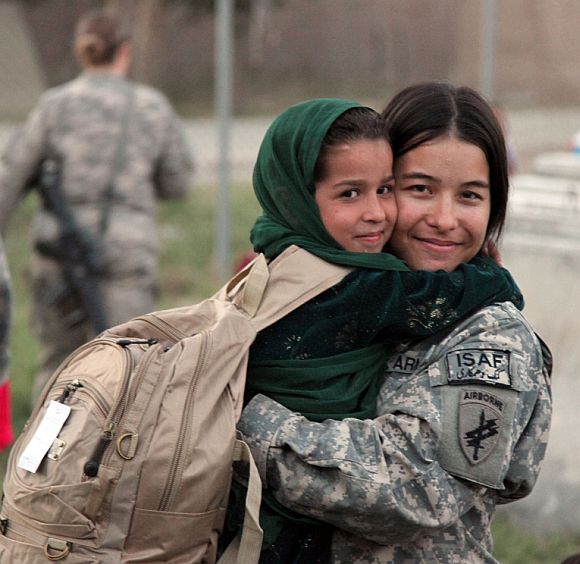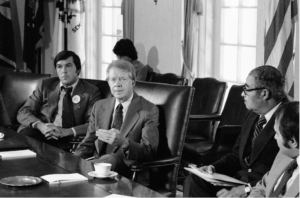
Afghanistan has endured war for decades with very little opportunity to rebuild and address the growing poverty rates and diminishing living conditions of its people.
In recent months, U.S. officials have begun discussions of peace talks in Afghanistan including plans to withdraw U.S. troops. The question is how will the prospects of peace under the terms that are being discussed affect poverty levels and quality of life for the Afghan citizens? Although peace is necessary for the growth of the Afghan economy, a reduction in U.S. support and funding could be detrimental to the lives of the Afghan people.
Effects of Conflict on Population
Years of conflict have had a disastrous effect on poverty in Afghanistan. According to a study from the World Bank, the number of people living below the poverty line has grown from 38.3 percent in 2012 to 55 percent in 2017, an increase of 5 million people. In addition, necessary resources such as education and employment remain inaccessible to the average Afghan citizen.
Secondary education attendance rates have dropped from 37 percent of children in 2013 to 35 percent of children attending in 2016. This decline is largely due to fewer girls attending school. Unemployment is rampant with 25 percent of the population unemployed and 80 percent of jobs qualify as insecure, meaning they consist of self or own account employment, day labor, or unpaid work. According to the Center for Strategic and International Studies, the economy of Afghanistan is dependent upon three main factors: foreign aid, the sale of narcotics and the Taliban.
Peace Talks in Afghanistan
In order for the Afghan economy to successfully recover and improve the quality of life of its citizens, institutional changes must be made. The peace talks in Afghanistan may provide an opportunity to end the cycle of poverty in Afghanistan, but only if it is done carefully and political stability can be ensured. Peace in Afghanistan would be beneficial for the economy, allowing for the opportunity to spend less on war efforts and more on the needs of the poor. According to the International Monetary Fund (IMF), estimates suggest that a return to the low levels of violence that were recorded in 2004 would result in an increase in annual revenues of around 50 percent, or approximately 6 percent of GDP per year.
However, this is only the case if the peace talks in Afghanistan are successful in creating political stability. For example, in 2014, allegations of election fraud created a highly unstable political atmosphere in Afghanistan resulting in a fall in the country’s revenue and growth. An inability for the Afghan government and the Taliban to find an agreement that is suitable them both in the peace process may result in a similar instability and economic downturn.
US Aid and The Afghanistan Economy
The Afghan economy is reliant upon U.S. aid and when that aid has been cut in the past, the effects have been detrimental for the lives of the Afghan people. In 2013/2014, the U.S. reduced civil aid and withdrew a portion of its forces. In the same year, there was a 3 percent increase in the overall poverty rate, the unemployment rate for Afghan men tripled and 76 percent of rural jobs that were created in 2007/2008 were lost.
Should U.S. aid be cut in a new peace deal, the effects will not be positive for the poverty levels in Afghanistan. Peace is necessary to create substantial economic growth in Afghanistan. However, any peace talks in Afghanistan that fail to address the political instability in the country and that reduce foreign aid to the Afghan people can only result in further suffering for the country.
Success Stories
Despite the bleak realities of war and violence in Afghanistan, there have been several successful aid programs in the country that have been improving the lives of the citizens. For example, the government of Afghanistan has struggled to implement an effective police force. As a result of the UNDP’s Law and Order Trust Fund for Afghanistan (LOTFA) over 150,000 Afghan police officers receive payment on time and accurately. The organization has also taken the initiative to recruit and train female police officers, resulting in 70 Police Women Councils in every province in Afghanistan. The UNDP has also funded a program to create 19 hydroelectric power plants, which are now supplying electricity to 18,606 people in Afghanistan.
Although war has ravaged Afghanistan for decades, the presence of various nongovernmental organizations and their projects to improve the lives of the citizens in combination with peace talks currently ongoing in Afghanistan that can ensure political stability and continued aid to the country have the possibility to break the cycle of poverty.
Alina Patrick

Alina, a contributing writer at “In the Zeitgeist,” is a second-year student at NYU who is double majoring in Politics and Photography and Imaging. She is originally from Summit, New Jersey, spent her freshman year in Washington D.C. at George Washington University before transferring to NYU, and plans to study abroad in Prague, the Czech Republic and Tel Aviv, Israel next year. She currently interns at the Borgen Project, a non-profit which lobbies Congress to fund international aid legislation. She hopes to work in conflict photography as a photojournalist and documentary photographer. In between classes and photo shoots she can be found listening to “
This article was originally published by The Borgen Project.



